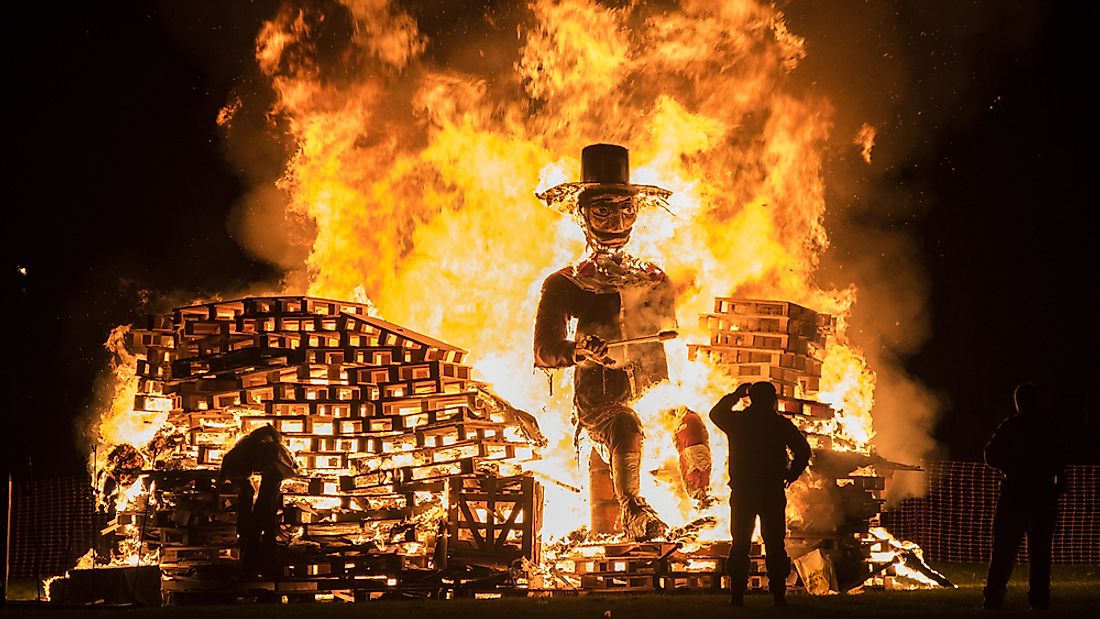What is Guy Fawkes Night?

Guy Fawkes Night is a bonfire night celebrated in the United Kingdom on November 5 to commemorate the night that would have changed the nation’s history. It commemorates the failure of the Gunpowder Plot against King James I by English Catholics led by Guy Fawkes, Britain’s most infamous rebel, and Robert Catesby. The plot had been to blow up the Parliament building and assassinate the King. A member of the group betrayed them and Guy Fawkes was arrested just when it was time to ignite the gunpowder and execute the mission. From then, every night on November 5, bonfires were set alight to celebrate the safety of the King. However, others do the ritual in commemoration of Fawkes for his brevity of fighting for Catholicism in England.
History of Guy Fawkes Night
During the reign of Queen Elizabeth I, dozens of Catholic priests were assassinated after the Pope excommunicated her in 1570. English Catholics were repressed and were allowed to neither conduct mass nor marry according to their customs. Upon her death in 1603, many Catholics anticipated that her heir, King James I, could tolerate the religion. James’ wife and mother were both Catholics and it had been rumored that James I would also convert to Catholicism. Unfortunately, upon taking over the throne, he did not uphold religious tolerance for Catholics. In 1604, he explicitly condemned Catholicism, calling it a superstitious religion and mandated all Catholic Priests to depart from England. He also carried on the tyrannical policies of his predecessor against Catholics and fined all who never attended Protestant masses.
English Catholics had on several occasions tried and failed in conspiracies against Queen Elizabeth I. However, they were still persistent and the last plot was done by a group of 13 young men, among them Robert Catesby and Guy Fawkes. Their plot, the Gunpowder Plot, was to ignite thirty-six barrels of gunpowder beneath the House of Lords. However, one of the group members betrayed the team and Guy Fawkes was arrested. He was tortured and gave the names of his co-conspirators who pleaded guilty to high treason and were sentenced to death in January 1606 by hanging, drawing, and quartering as a warning to conspirators.
Significance of Guy Fawkes Night
The prosecution of Guy Fawkes did not immediately free Catholics until 1828 when they were finally emancipated in England. They were granted full rights to vote, conduct mass publicly, and marry under their rites and customs.
The House of Parliament is still searched even today by the Yeomen of the guards before the state opening, which is conducted every year in November since 1928. It is a ceremonial ritual done to ensure that no modern day Fawkes is hiding in the cellars. Though the cellar Fawkes tried to blow up was destroyed in the medieval House of Parliament fire in 1834, his lantern is preserved in the Ashmolean Museum, Oxford.
Guy Fawkes Night is celebrated in the United Kingdom and some British colonies with bonfires, parades, and fireworks. Straw dummies representing Fawkes and contemporary political figures are tossed in the bonfires as a form of sacrifice for Fawkes’s treason.











